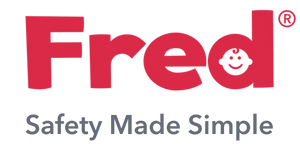As toddlers grow and explore, the home quickly becomes their playground. While many parents focus on obvious hazards like stairgates and sharp corners, there are also hidden risks that can be overlooked - and yet make a big difference to a child’s safety. Spotting and addressing these “invisible hazards” is one of the easiest ways to baby proof your home and build confidence that your little one is safe while exploring.
September is also Baby Safety Month, a global initiative that highlights the importance of prevention. Much like swapping summer shoes for wellies or packing school bags, it’s the perfect time to review your home’s child safety measures. By tackling invisible hazards, you’re not only protecting your toddler - you’re also gaining peace of mind.
1. Button Batteries in Everyday Devices
Small, coin-shaped button batteries are found in toys, remote controls, watches, and hearing aids. Despite their size, they are extremely dangerous if swallowed. The acid inside can cause serious internal burns and, in some cases, life-threatening injuries. Many parents assume these batteries are harmless because of their size, but a 2025 scientific study highlights that ingestion is a leading cause of emergency visits in young children.
How to protect: Regularly check battery compartments on all devices, and only use products with child-resistant covers. Keep spares locked away in a secure container.
2. Unsecured Heavy Furniture
Bookshelves, dressers, TVs, and cabinets may look sturdy, but toddlers are natural climbers. Even a seemingly stable piece of furniture can tip over, leading to serious injuries. In fact, furniture tip-overs are a common cause of head injuries in children under five - with one child every minute visiting the A&E because of this! (Source)
How to protect: Anchor heavy furniture to the wall with anti-tip straps or kits. We offers a simple Anti-Tip Kit that secures furniture up to 65kg, giving parents peace of mind and keeping little explorers safe.

3. Toxic Cleaning Products
Many households store cleaning products under sinks or in low cabinets, where children can easily access them. Even products labeled “eco-friendly” or “natural” can cause poisoning or respiratory irritation if ingested or inhaled. Nidirect recommends using locked storage for any hazardous household product.
How to protect: Install childproof cabinet locks, such as Invisible Magnet Locks or Drawer Catches, to restrict access. You can also consider swapping to non-toxic cleaning solutions whenever possible to further reduce risks.
4. Open Windows and Balconies
A wide-open window or low balcony railing can look inviting to a toddler who loves to climb and lean. Even a small opening can be risky if left unattended. The good news is that simple childproofing products make it easy to reduce this hazard without compromising on fresh air or outdoor space.
How to protect: Fit window stoppers or guards to limit how far windows open. For balconies, ensure railings are secure and add barriers if needed. These small adjustments mean children can safely enjoy the view without parents worrying.
5. Unattended Hot Appliances
The Child Accident Prevention Trust report that around half of all children are burnt in the kitchen at home. Appliances such as irons, kettles, toasters, and stovetops present an invisible burn risk. Toddlers are naturally drawn to warmth and movement, and an unattended appliance within reach can quickly become a hazard.
How to protect: Always unplug or turn off appliances after use, and store them out of reach. For stoves, hob guards like the Stove & Hob Guard create a barrier between children and hot surfaces, reducing the risk of burns and spills.

Making Invisible Hazards Visible
Childproofing your home doesn’t have to feel overwhelming. By focusing on these less obvious hazards, you can take simple steps that prevent common accidents and create a safer environment for your child.
From anchoring furniture and locking cabinets, to securing windows and using appliance guards, every small change adds up to stronger protection. Combining everyday precautions with reliable child safety products gives parents the freedom to relax - knowing that their little one can explore, play, and learn safely.

